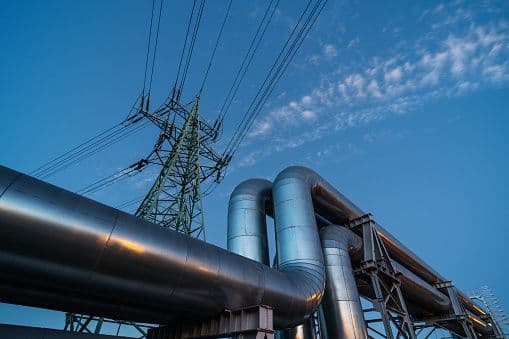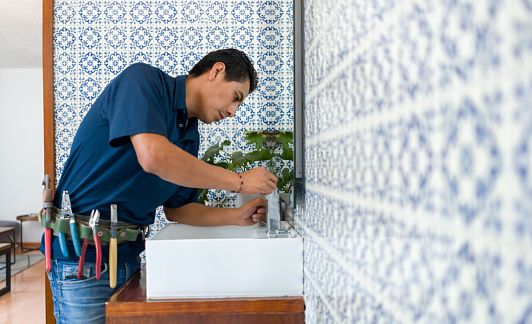
Tips for a Successful Service Today Plumbing Installation
When you think about plumbing installation, what comes to mind? Probably images of giant pipes and complex systems. But that’s not the only thing that needs to be taken into account when it comes to a successful service. In this blog post, we’ll explore some tips for a successful service today, from preparation to execution. By following these tips, you can ensure that your plumbing installation is a success and that your customers are happy with the end result.
Preparation
Planning for a plumbing installation should start well in advance. When you schedule your appointment with a plumber, be sure to provide them with all the information they need to carry out the work properly, including:
-The type of fixture or appliance you need service on
-The location of the fixture or appliance
-Any special instructions or warnings related to the installation process
When it comes time for the installation, make sure to:
-Arrive with all necessary paperwork and supplies, such as a copy of your warranty card and an identification card for the plumber.
-Give the plumber as much time as possible to get started. Allow plenty of time for him or her to unpack everything, measure distances, and set up any tools needed.
-Stay aware of what is happening during the installation process; if there are any problems, don't hesitate to ask questions or request help.
The Basic Sizes of Plumbing
The Basic Sizes of Plumbing
When it comes to plumbing, there are a few basic sizes that you will commonly see. These include: 3/8 inch, 1/2 inch and 7/16 inch.
3/8 inch plumbing is the most common size and is used for smaller projects such as fixing a leaking faucet or replacing a single pipe. 1/2 inch plumbing is usually used for larger projects such as installing new water lines or repairing a major water leak. 7/16 inch plumbing is typically used for connecting pipes together or connecting fixtures to walls.
Fitting a New Service
When it comes to plumbing installation, there are a few things you can do to ensure a successful service. First, make sure you have all the necessary supplies on hand. This includes the correct tools for the job, as well as any required materials like cement or rebar. Next, plan your work schedule carefully. Be sure to account for interruptions and delays, and factor in possible weather conditions. Finally, be professional and friendly throughout the process. Your customers will appreciate it!
Changing a Valve
Today, there are many different types of plumbing fixtures that can be used in different applications. If you are unfamiliar with some of the newer types of plumbers’ supplies and fittings, don’t worry – here are a few tips to help you get started:
-Toilet Valves: Toilet valves come in different styles and sizes. You will need to determine the correct size for your toilet bowl. Look for a valve that is adjustable to allow for proper water flow and flush function. Some toilets have dual valves so both hands can operate them.
-Showerheads: showerheads come in various height options, spray patterns and materials (including plastic). It is important to find one that fits your needs and matches the style of bathroom décor. For new construction or retrofitting, it may be necessary to replace an old showerhead with a more modern model.
-Sink Faucets: Sink faucets come in a variety of finishes, styles and sizes. It is important to select the right type for your sink, based on its location and use (bathroom, kitchenette). Look for a faucet that has a manual or automatic shutoff feature.
Burst Pipe Repair
Fixing burst pipes is a common issue for plumbers. Burst pipes can be caused by a variety of factors, from misuse to flood damage. Here are some tips for repairing burst pipes:
1. Clear the area: Before any repairs are made, the area around the burst pipe must be cleared. This will help prevent potential injuries and further damage to the property.
2. Shut off the main water supply: If possible, shut off the main water supply to the property so that no more water can leak into the pipe. This will help stop any potential flooding and reduce potential damage to other areas of the home.
3. Open up the broken pipe: Once the area has been cleared and the main water supply has been shut off, open up the broken pipe using a jackhammer or a wrench. Make sure to wear protective gear in case chemicals or debris are released from the pipe during repair work.
4. Fixing burst pipes: Once open, fix the busted pipe with PVC cement or epoxy sealant. Be sure to use enough pressure to ensure a tight seal. Repeat steps 3-4 as necessary until all repairs have been made
Handling Sewer and Water Lines
A successful service today's plumbing installation starts with the right tools and equipment. You need the right tools to get the job done quickly, safely, and correctly. Here are some of the most important tools for a successful service today plumbing installation:
-Cordless drills - These drills can be used for a variety of tasks, from drilling holes in pipes to cutting metal tubing. They're a must for any plumber's toolkit.
-Pipe cutters - A pipe cutter is essential for cutting through water, gas, or sewer lines. Choose a model that has both straight and curved blades so you can handle different types of pipe easily.
-Levels - Setting up levels is essential when working on plumbing projects. Use them to ensure your work is accurate and level.
-Hose reels - A hose reel is an essential tool for keeping your water supply organized and handy while you're working. Make sure it has multiple ports so you can hook up multiple hoses at once.
-Flexible connectors - Flexible connectors are perfect for connecting pipes in tight spots. They're also easy to use, making repairs quick and easy.
Unblocking Drains
There are a few things that you can do to ensure that your plumbing installation goes well today. Here are a few tips:
1. Plan Ahead - Make sure that you have a plan for what needs to be done, and when. This will help ensure that the job goes smoothly and that there are no delays.
2. Get The Correct Tools - Make sure that you have the correct tools for the job, including the right size wrench and pipe cutters. If you don't have the proper tools, it will make the job much more difficult and time-consuming.
3. Use The Right Materials - Always use the right materials when fixing or installing pipes and fittings. This will help prevent damage to your property and ensure that the plumbing installation lasts long term.
4. Follow Instructions Quickly - Don't try to do too many things at once; take your time and follow instructions quickly and precisely so that everything goes as planned. This will help minimize potential problems and delays in the overall process.
Conclusion
A successful service today plumbing installation starts with preparation. Make sure you have all of the required materials and equipment before beginning work, so that nothing unexpected comes up during the installation process. Finally, be sure to have a plan for after the job is complete in case any problems arise. All of these tips will help make your service today plumbing installation as smooth as possible. Thanks for reading!

Appreciate the creator